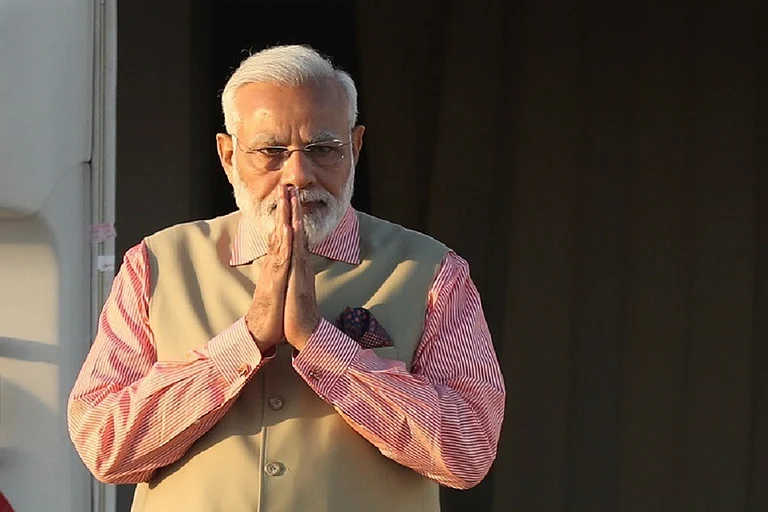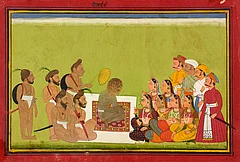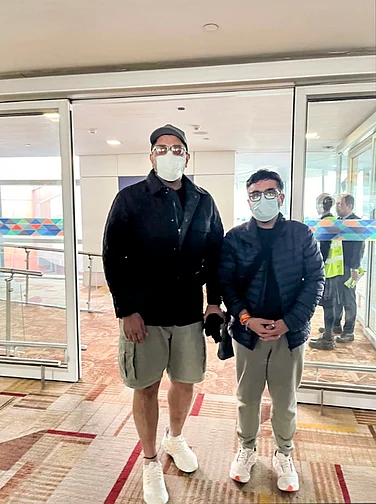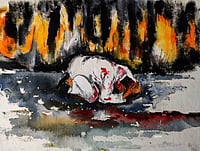A group of devotees had gathered around a holy figure on a beach in south India. They started to recall the various names of the ocean found in Indian mythology. “Ratnakara” (Lord of Precious Stones) was one of them. The holy figure smiled and said: “The ocean should have some diamonds for us.” He then dipped his hand into the seawater and brought out a diamond necklace.
Sri Sathya Sai Baba (1926-2011) was this holy figure. Any account of his life will include episodes where he makes objects appear out of thin air. At an early age, he is said to have taken out fruits and flowers from an empty bag for his school friends. He also made pencils and other school items appear for his classmates who needed them. He made flowers appear for his family members all the time. Instances where he increased the quantities of food to make it suffice for a large group of his devotees are also very many.
Sai Baba used to make vibhuti (sacred ash), gold rings and necklaces appear in front of his devotees till late in his life. I doubt there is any other major spiritual figure in 20th century India with whom the performance of miracles is as tightly tied to their persona. By the early 1970s, Sai Baba was probably the most powerful spiritual guru in the country. His devotees in India and abroad numbered in lakhs. Around 1,500 organisations—all accountable to the Sri Sathya Sai Central Trust—are known to have existed around this time.
In 1973, H Narasimhaiah (HN), a well-known Gandhian freedom fighter and Vice-Chancellor of Bangalore University, was invited to inaugurate a summer workshop on spirituality that Sai Baba had organised at his ashram in Whitefield, Bengaluru. In his autobiography, Horatada Haadi (The Path of Struggle, 1995), HN, a trained physicist, recalls his hesitation about accepting the invite since he had long viewed Sai Baba’s miracles as unscientific. Sensing it as an opportunity to directly share his views with him, he finally agreed to inaugurate the event.
The inaugural was a grand event. Around 2,000 youth dressed in white were seated on the floor in a large auditorium. The elderly devotees were seated in the front row. Two grand throne-like chairs were placed on an elevated platform: one for Sai Baba, the other for HN. A large lamp was beside them.
Delivered in English, the speech—which HN had worked hard at—argued that the spiritual seeker had to be socially sensitive and free from superstition. Admitting that he believed in God and in reincarnation, he clarified that he kept those private, without using them to exploit anyone. His speech concluded by asking Sai Baba and the audience to strive to end poverty, social exploitation and superstition and the system that supported them.
There was a stunned silence. The foreign women devotees in the front row looked very anxious. Even the three friends of HN, who had accompanied him, did not applaud.
This was the beginning of HN’s protracted effort to prove that Sai Baba lacked real powers. In 1976, HN formed an 11-member “Committee to Investigate Miracles and Other Verifiable Superstitions”. This committee did succeed in exposing a couple of small-time miracle men in the state. The committee’s most spectacular target was, of course, Sai Baba.
They wrote three letters to him—over six weeks—asking him to let them scientifically inspect his acts of miracle making. When they did not get a reply, they released the letters to the press, which then turned this incident into a raging national controversy. Journalists asked HN: “If you met Sai Baba, what would you wish for?” “A pumpkin,” HN replied. A point he stressed repeatedly was that Sai Baba only gave out palm-sized objects. Couldn’t miracles bring out larger objects? Further, the other objects of miracles, like watches, were branded. Didn’t this prove that they were not really created by him?
The late editor of Blitz, R K Karanjia, carried each of these objections to his interview with Sai Baba. In response, the latter asserted that he made objects appear without knowing what was being created. And, he did not give pumpkins or cucumbers as they were perishable and did not work well as talismans. Scientific methods, he added, could never understand his powers; only spiritual figures could succeed here.
I pulled out this old episode not to defend or repudiate the miracles of Sai Baba or the efforts of HN, but to throw in relief a genuinely sticky issue.
From a modern perspective, the worlds of faith can appear as oddities, and, worse, falsehoods. Scientific styles of validating reality make that a natural view. The truths of science and faith rest on differing ideas of reality and human experience. Since the beliefs pertaining to faith and to the sciences of the natural world are rooted in different worldviews, using the same term, “belief”, in both cases is indeed part of the problem.
Scientific, rational opposition to magic, superstition, and religious faith has been around in India since the 19th century. The intention is easy to appreciate: the number of victims of fake gurus is so huge. The hope of the rationalists that the followers of holy men and women will desert them when their miracles are exposed, though, is not always fulfilled. Since the positive attachments that the holy figures elicit in their devotees will not all hinge on miracles, the latter’s faith in them might not diminish even when one or the other miracle is shown to be false. The well-meaning activist effort to keep people away from pseudo holy figures might be better off if it examined its own understanding of the nature of belief found in faiths.
When the recently-built Ram Temple in Ayodhya was being criticised as an affront from multiple vantage points—legal, political and economic—a friend observed: “What might Kabir have done now? He would have moved Rama out of the temple.” The intelligibility and appeal of that effort would have derived from within the belief of the believers.
(An earlier version of this article appeared in Another India: Events, Memories, People (Simon and Schuster, 2023).
(Views expressed are personal)
MORE FROM THIS ISSUE
Chandan Gowda is Ramakrishna Hegde chair professor at the Institute For Social And Economic Change, Bengaluru
(This appeared in the print as 'Of Ash And Ashirwad')
































